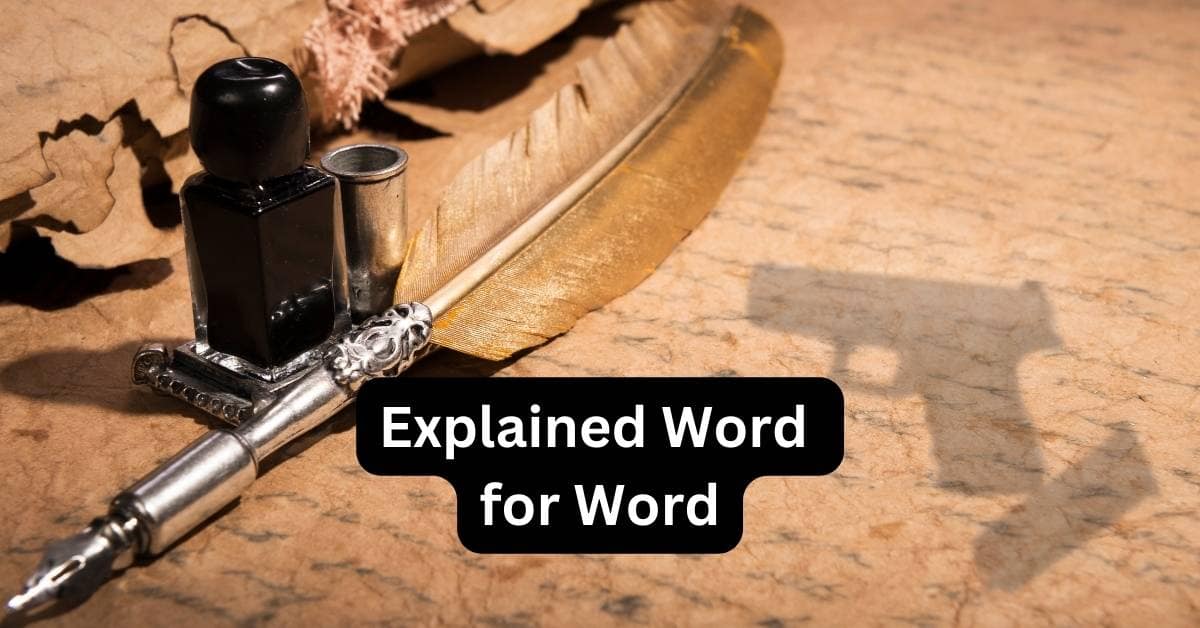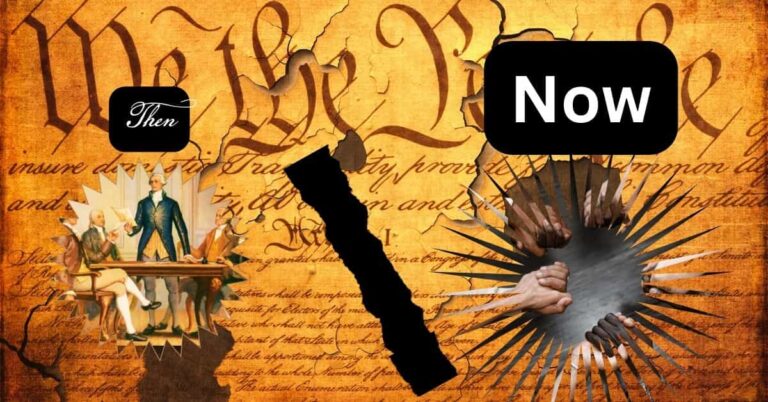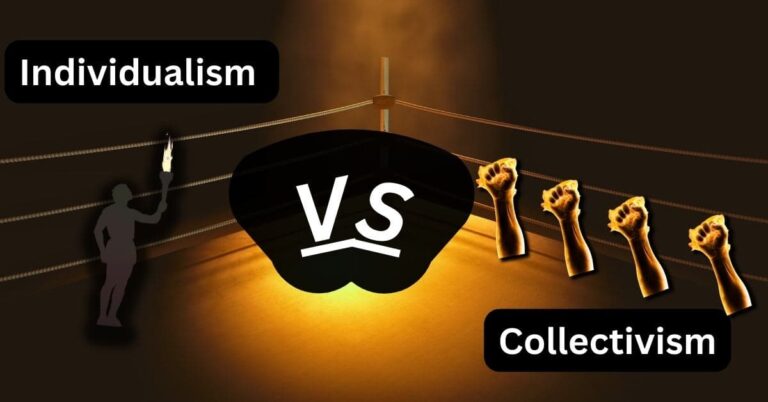Thumbing through the dictionary, you look up the words to the 2nd Amendment. However, you realize it is an enigma of words. The 2nd Amendment’s wording shrouds an illusiveness.
Two sides battle for the 2nd Amendment’s meaning: individual vs collective rights. The most contentious phrase is “well regulated”. Some scholars believe it to mean- controlled by government through regulation. Others believe it represents- organized and proper working order.
As a person who enjoys reading documents from the 18th century, I recognize that our ancestors used a different language style. I will help you decipher the 2nd Amendment’s wording into modern lingo.
Let’s find the 1776 meaning of the 2nd Amendment.
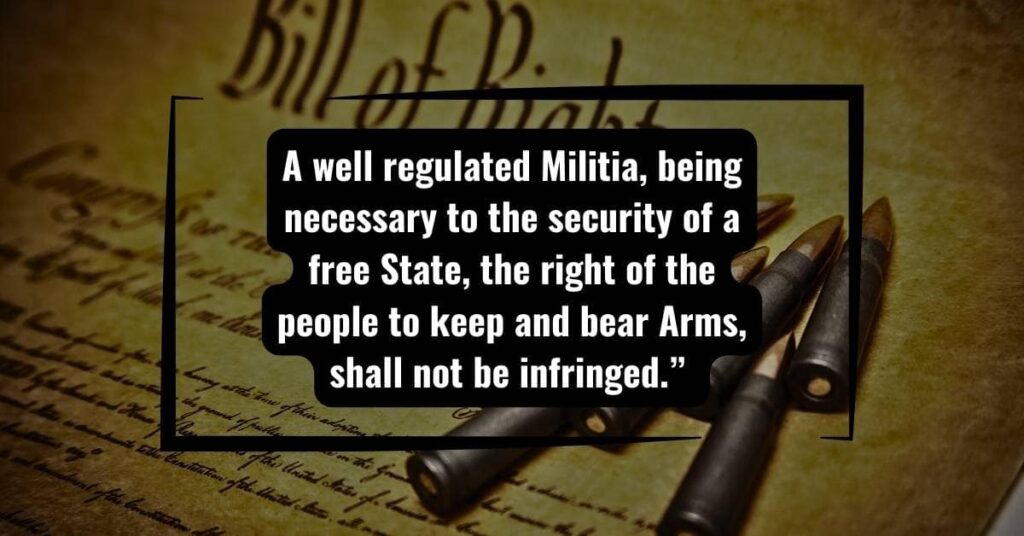
Table of Contents
Ambiguity of the 2nd Amendment
To understand the 2nd Amendment in the full context, I’ll briefly give you a scenario.
Imagine you wake up one morning in 1776 and look outside your bedroom window.
Cannon fire echoes, splintering trees in the morning stillness. Foreign, red-coated troops swarm the area, bash in your neighbor’s doors, and confiscate their means of defense. You know without a doubt your house is the next target.
Soon, your guns will be in the hands of the redcoats. As you gaze further, activity outside intensifies with thick smoke billowing from neighboring houses. Chaos reigns through the once quiet hollows.
In this dire situation, wouldn’t the 2nd Amendment be a nice safeguard?
If you’ve never experienced violence like this, you must put yourself in the Founders’ boots. To them, the 2nd Amendment is clear. Every citizen has a private freedom to own firearms.
The ongoing ambiguity in understanding stems from modern scholars deeming its language outdated. Who needs guns?
Your understanding of these terms dictates your access to weapons in difficult circumstances. Wars like the American Revolution represent uncertainty.
Capital letters, commas, and word choice are important aspects. Remember, the 2nd Amendment’s intention uses context and common sense of the era.
America is an experiment. Our Founding Fathers wanted to prevent tyranny by arming the populace. Yes, they wanted law-abiding citizens to have weapons.
Understandably, weapons in civilians’ hands are scary for some. Defending against tyranny without access to the right tools is a significant concern.
Individualism is prominent in American society. We are a self-reliant people that value freedom. And the 2nd Amendment declares that citizens have the private right to own firearms.
Defining Theorists of the 2nd Amendment
One quick note before we move on. I must define these terms clearly so you’re not confused. These distinguish the sides of what the 2nd Amendment means.
Individual Rights Theorist: A citizen who believes in the following:
- 2nd Amendment as an individual God-given right to self-defense
- Fundamental values of freedom and liberty
- Acknowledges all guns aren’t bad
- Believes in supporting the militia through voluntary participation
Collectivist Rights Theorist: A citizen who believes in the following:
- Views the 2nd Amendment as a collective right to possess guns
- Supports gun control measures to limit crime, even if it means restricting individual rights
- Guns aren’t suitable for general ownership except for police, military, or licensed citizens
- Believes in supporting the militia as a civic duty
In the next few sections, I will go line-by-line dissecting the 2nd Amendment.
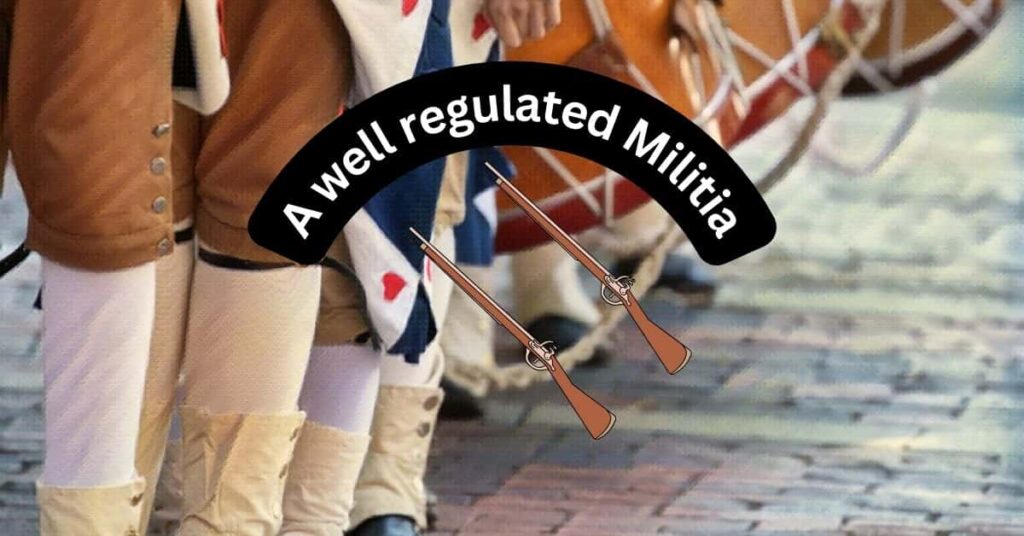
“Well regulated Militia”- How Much Government?
Individual Right’s View:
In good working order and organized
Collectivist Right’s View:
Controlled by state legislatures or Congress within a militia- or collective setting
Individual Right’s View:
Before 2008 in the DC v. Heller case, scholars debated the meaning of this exact phrase. The Heller case clarified an individual right for a citizen’s arms.
Antonin Scalia concluded in his majority opinion that well regulated meant:
“imposition of proper discipline and training.”
Antonin Scalia– Supreme Court Justice
He didn’t interpret the phrase as granting the government excessive power over the people.
Scalia considered “well regulated” part of the prefatory- or preamble- to the 2nd Amendment.
Similarly, the Constitution has a preamble to articulate its fundamental objectives. You want to know the general ideas of our founding document before you try to understand it.
The preamble to the 2nd Amendment meant that the Founders didn’t want people unprepared. If an invasion occurred, you- as a citizen militia member- needed all your gear to function- nothing more or less.
The Founding Fathers wanted to give the people as much liberty as possible. Thus, they helped by framing the 2nd Amendment as an individual right.
Collective Right’s View:
Conversely, a leading 2nd Amendment scholar named Saul Cornell wrote a book called A Well Regulated Militia: The Founding Fathers and the Origins of Gun Control. He emphasized the importance of “well regulated liberty”. He is a collective rights theorist.
No new nation needed civilians running around wild with firearms. Instead, you must be “well regulated” under strict government oversight. Giving the citizens too much liberty leads to anarchy. Who would want that scenario?
Some examples of regulation he used are:
- Regulation on the gunpowder storage
- Prohibit the weapons in certain locations
- Retained the entitlement to disarm dangerous groups
What happens if you become one of those risky groups deemed a hazard by the government? You’d have the police at your house wanting to ask you questions about your guns.
The discrepancy regarding well-regulated is one of the biggest conundrums. The courts settled the dispute.
Well-regulated means ensuring the proper working order of your firearms. It doesn’t indicate unlimited government control or totalitarian desires.

atomazul / shutterstock.com
What is “being necessary to the security of a free State”?
Individualist Right’s View:
“Free state” refers to a country and individuals living without the shackles of tyranny. “Security” denotes personal safety and protection from government oppression.
Collectivist Right’s View:
“Free state” refers to federal government authority prevailing over the states. In other words, federal power makes state governments apprehensive. “Security” entails citizens protecting the state through a government-controlled national guard.
Individual Right’s Theory:
Essence of a “Free State”
What do you picture a “free state” to be?
Do you envision a place free of intrusive surveillance or control? Slang for this is “big brother”.
In the Framer’s time, it simply meant a free country. You lived in a land of liberty. There aren’t random roadblocks requiring you to show your papers to pass through a state border.
Individual freedoms trump state rights. Your personal self-interest is more important than your government’s worries.
Hence, this perspective asserts the individual right to own firearms.
Also, the Framers didn’t want the U.S. to morph into a land of tyranny. Monarchies represented modern dictators. They wanted nothing to do with them. With these concerns in mind, the Founders emphasized the paramount importance of living in a “free state nation”.
The Founders deliberately shaped their language to match the era’s style. For instance, John Adams didn’t like pure democracy. A pure democracy is when there are no representatives, and popular vote rules the day.
Adams used distinctive antonyms like “free state” to oppose democracies.
Here is a colonial text representing the “free state” the Founders depicted:
“There can be no constitutional liberty, no free state, no right constitution of a commonwealth, where the people are excluded from the government.”
A Defence of the Constitutions of Government of the United States of America (1797)- John Adams
In this sense, Adams referred to a free state where people didn’t live in fear of oppression. Again, this means on an individual basis you’re able to live in liberty.
Free State Resources and Additional Meanings:
- Free society
- Free country
- Free from tyrants
Revolutionary Examples:
Memorial and Remonstrance Against Religious Assessments (1785)- James Madison
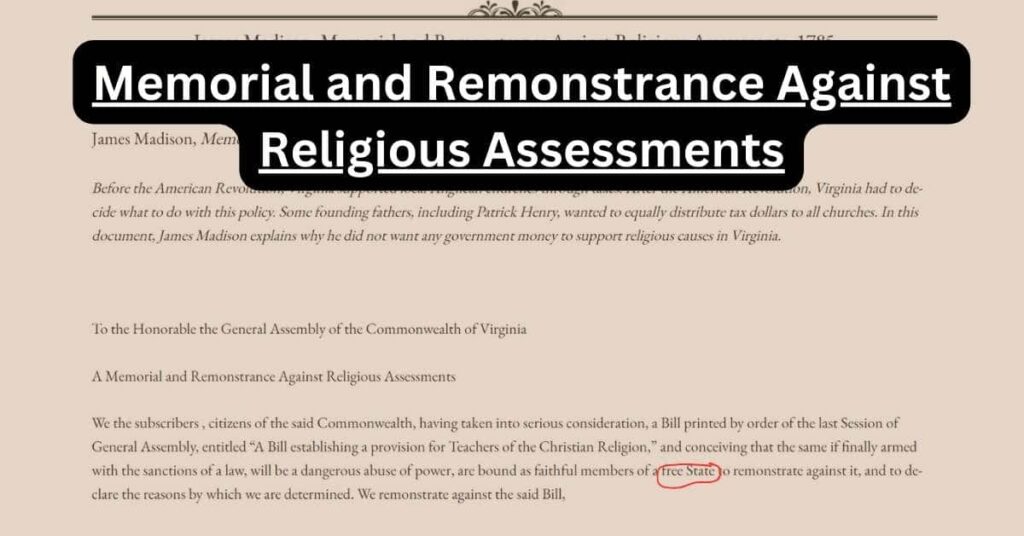
North Carolina Bill of Rights (1776)
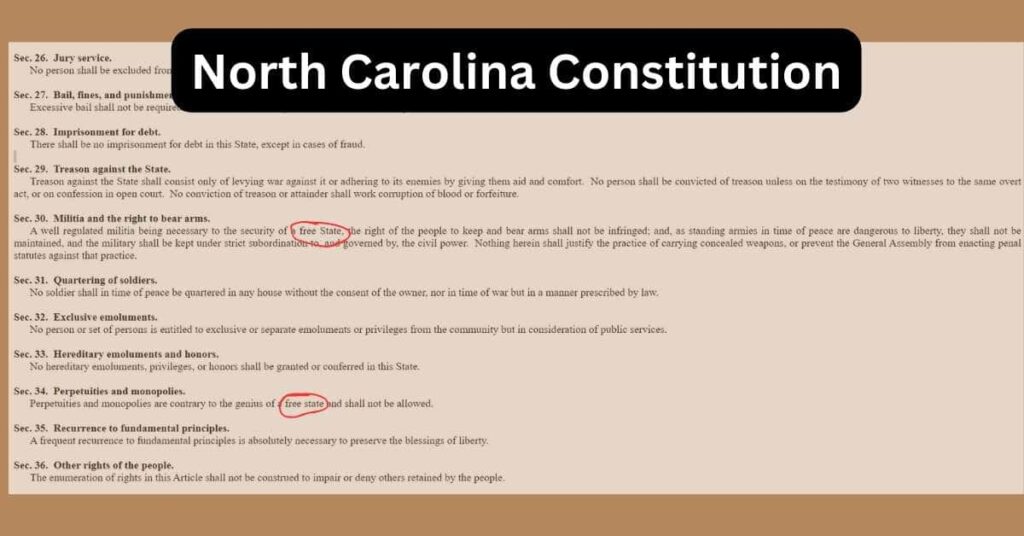
Pennsylvania Constitution (1776)
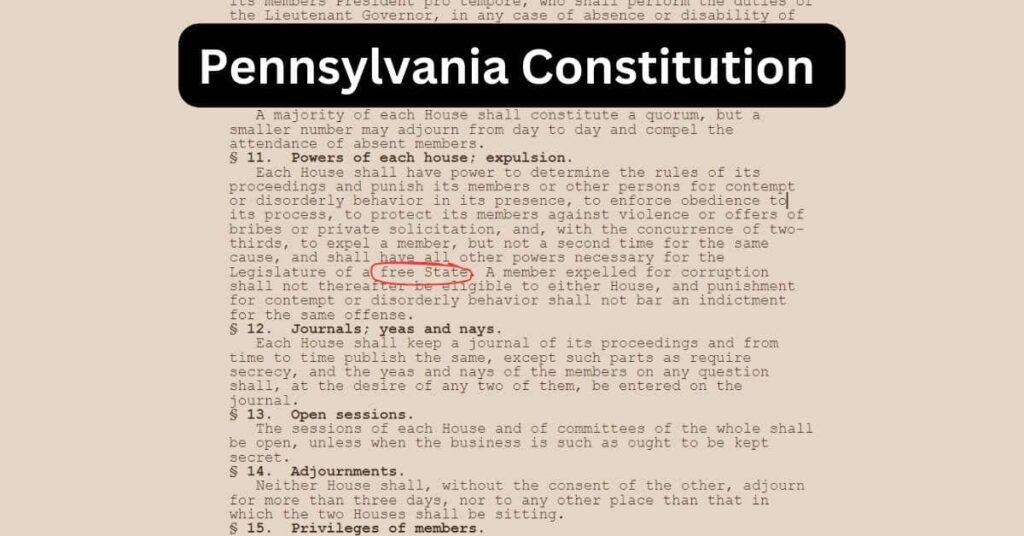
Texts the Founders Read:
- The Spirit of Laws- Montesquieu
- Hume’s Essays
- Cato’s Letters
Interesting Fact:
Ben Franklin mentioned future generations should learn English grammar from the Cato Letters.
Thus, living in a free state void of tyranny became the top priority.
Security- It’s Meaning
Security involves the state militias. What is the best way to protect your liberty in a country?
You require a citizen army capable of resisting a dictator’s standing military force.
Each individual person needs to be secure in their:
- homes
- self
- unreasonable search and seizure
Each militia can repel oppressors collectively but also individually.
Collective Right’s View:
Courts and scholars abolished this theory. I will give you a brief summary of it.
Free State-What does it mean?
Collectivist scholars emphasize the dangers of federal authority over state power. To safeguard against federal overreach, they stress state control over the militia.
Numerous rebellions supported this theory.
Some of the rebellions mentioned in many scholarly articles included:
- Whisky Rebellion (1791-1794)
- Fries Rebellion (1799-1800)
- Rebellious response to John Adam’s Alien and Sedition Acts (1798)
All these uprisings have a common theme.
A group is mad at the government because of high taxes or other grievances. They protest with firearms in a militia setting. Or in other situations, they protest peacefully to address their complaints.
At times, such as the Whiskey Rebellion, the federal authorities swiftly ended uprisings. Yes, a few people lost their lives.
The U.S. grappled with determining the necessary level of public regulation.
Consequently, with all of these exciting events occurring begs important questions:
- How can citizen-soldiers effectively voice their grievances?
- Do they possess the right to individually revolt against the government?
To collectivist thinkers, a more important point exists.
How do you protect the state from federal authority?
Individual grievances are minuscule compared to the group.
A “free state” consisted of keeping the militia capable of resisting federal authorities.
Security-A Communal Interpretation
How would the state organize and “well regulate” these militia members?
For one, collectivist thinkers don’t see militia members as citizen soldiers. They’re under the state’s direct control.
In historical settings, many citizen soldiers formulated a passive resistance. They refused to muster and serve. Soldiers disobeying orders doesn’t fall into “well regulated”. That’s insubordination.
They see this passive resistance as a threat to state security.
So, a collectivist definition dictates that the state controls militia members. . “Free state” refers to protecting the nation from federal overreach. State militia members essentially function as a national guard to preserve nationwide interests.
2nd Amendment Related Articles:
• Repealing amendments is on the only surefire way to rid the U.S. of guns. LEARN MORE how I dissect the frightening repeal the gun amendment movement.
• Preventing tyranny is the what Constitutions are for. LEARN MORE how the U.S. Constitution safeguards liberty.
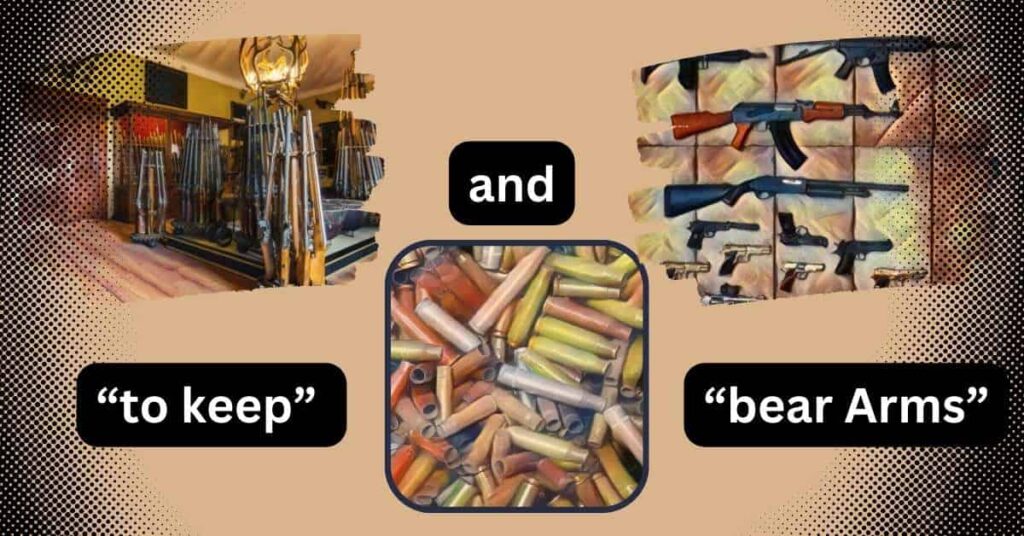
Defining “the right of the people to keep and bear Arms”
Individual Right’s View:
Each person has individual liberty and the right to carry firearms for self-defense.
Collectivist Right’s View:
No individual constitutional right to own firearms exists outside a militia. Personal self-defense is secondary to ensuring the safety of the broader community.
Individual Right’s View:
“The Rights of the People” Explored
This 2nd Amendment phrase gives power to the individual. You have a right to personal security and determine your own safety. Self-defense is a critical idea to remember.
The Framers referenced the words “ the people” 5 times in theBill of Rights. It appeared in the 1st, 2nd, 4th, 9th , and 10th Amendments.
The phrase “the people” corresponds with governmental authority- or power. Do you notice the key term?
Power…
States possess power while “the people” hold individual rights. When you hear “We the People”, it refers to citizens’ rights regarding the government.
Each time they referred to individual citizens.
For example, you have the First Amendment right to free speech. You assemble as a group-or collective- at times. But you have an individual right to express your thoughts.
Furthermore, what do you think of when you hear the word “right”? If you live in the United States, you hear it regularly from birth. And there’s a reason for that.
A “right” is a preexisting principle bestowed upon you from your first breath. Governments attempt to hinder them. That’s why liberty is important to protect the freedoms we have.
“To Keep”-For Your Safety
When you keep an item, you possess and control it. You determine what to do with your property.
To ‘keep’ arms, you must acquire them. This acquisition involves making or purchasing firearms.
In the present, obtaining arms means buying from an authorized gun store. You pay your money and pass a background check. Then, upon successful completion of those preliminaries, you now can “keep arms”.
Samuel Adams- a prominent 1776 Revolutionary- became a strong supporter of keeping arms. He said the following at the Massachusetts Convention:
“The Constitution shall never be construed to authorize Congress to prevent the people of the United States, who are peaceable citizens, from keeping their own arms.”
Samuel Adams
“Bear Arms”-The Important Part
In the event of a threat, ‘bearing arms’ is about self-defense and the preservation of liberty.
To simplify, you carry- or bear- a firearm by today’s standard of concealed carry. While open carry is a right, most firearm enthusiasts emphasize concealed carry.
Individual theorists believe in freedom of choice and self-defense. They view bearing arms as vital for a lasting republic.
Collectivist Right’s View:
For the collectives, they emphasize the safety of society versus your personal security. They believe bearing arms belongs under the “well regulated” part of the 2nd Amendment.
“The People”- A Collective Journey
Firstly, they believe that “the people” refers to the people as a group. Personal desires are unimportant.
Specifically, collectives define “the people” as the entire militia. They function as a unified group rather than in an atomized manner.
Atomized is a term used by collectives saying individuals have too much personal self-interest. They’ll do what they want when they please. No group conformity or uniformity occurs.
The militia is bound by state regulation. You do what the state says when they say it.
As a result, your local lawmakers determine the discipline and training required. There is no room for personal autonomy.
“To Keep”-
Most collectivists don’t focus much on this part of the 2nd Amendment. They spotlight the last few words of this phrase: “bear arms”.
Yet, their primary objective is ‘to keep’ guns away from public threats. Felons- or domestic abusers- should have restrictions applicable to the law. The staunchest individualists agree that felons shouldn’t own weapons.
There isn’t much tension here. The controversy comes next.
Both sides agree on the most basic idea of weapons control for convicts and criminals.
“Bear Arms”
What is the best course to ensure public safety in “bearing arms”?
Collectives prioritize balancing public safety over personal self-defense.
In society, collectivists believe in the right of people to be free from violence. Police are the primary means of defense against crime- not personal vigilantes. This is where the state exerts power. They have a monopoly on force.
Upon joining civil society, you surrender weapons for the collective good. Self-defense with firearms shifts from a right to a privilege.
In other words, the state can regulate your firearm rights into only a memory.
Many countries- such as England- adopted this mentality over the last 150 years. Self-defense and firearm ownership is all but dead.
Also, collectivists perceive “bearing arms” as subject to exclusive military use.
Firearms must be in a centralized location like an armory. They’re easier to control and disperse if only needed in times of war.
Collective theorists believe firearms are a privilege tightly controlled by the government. Self-defense is the primary goal of the police- not yourself.
2nd Amendment Articles:
• Guns: Privilege or Right? LEARN MORE about how I dissect this important fundamental gun question. I go over an important court case defining it.
• People will try to infringe on gun rights. LEARN MORE and discover my article on gun control fallacies and sayings.
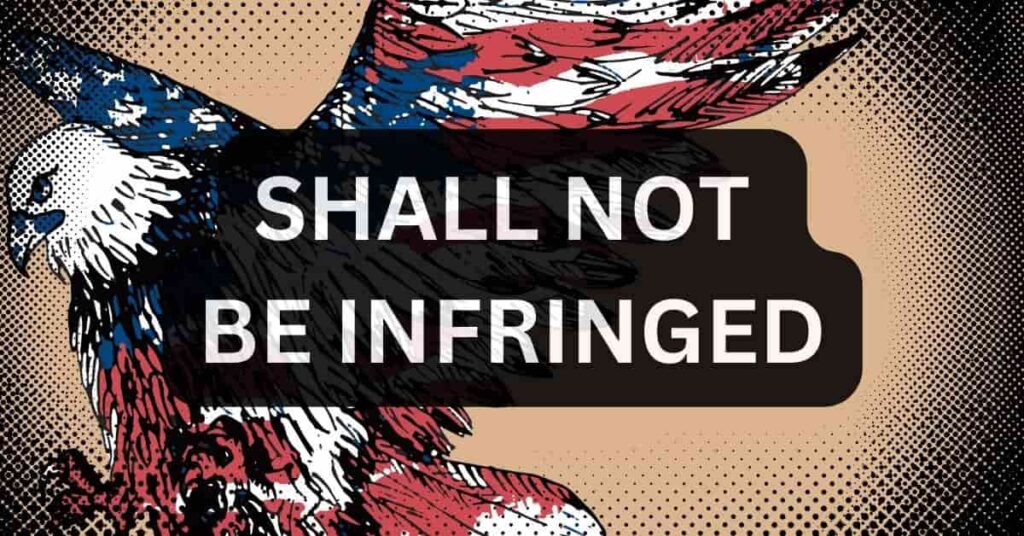
The meaning of “shall not be infringed”
Individual Right’s View:
Seen as a right where arbitrary government restrictions are tyrannical measures against citizens.
Collective Right’s View:
Don’t see the 2nd Amendment as absolute and see firearms as subject to “reasonable” restrictions.
Individual Right’s View:
Seen as a rallying cry against an overburdening government, many individual theorists debate what is an infringement?
- Does locking up your gun in your house count as an infringement?
- Can you carry a gun into sensitive places such as courthouses?
- Would the Framers approve of concealed carry?
Important questions as these determine where this conversation goes. 2nd Amendment absolutism is strong in individual circles.
Any government restriction is an infringement. Movements- such as abolishing Alcohol, Tobacco, and Firearms (ATF)- gained traction. For those unfamiliar, the ATF is the law enforcement agency responsible for administering gun laws.
Absolutists see the ATF as an infringement of firearm freedoms due to arbitrary fiat. They change regulations on a whim making objects such as bump stocks legal one day but banned the next.
Also, “shall not” appeared 4 times in the Bill of Rights. Each time phrases such as:
- 2nd Amendment- “shall not be infringed”
- 4th Amendment- “shall not be violated”
- 8th Amendment- “shall not be required”
- 9th Amendment- “shall not be construed”
Comparing the terms above, it is self-evident the Framers didn’t want intrusions. No unreasonable searches and seizures or no excessive fines are acceptable as protected in other amendments.
Individuals argue that “shall not be infringed” is the strongest phrase. Plus, it is the 2nd Amendment- not the 5th, 6th, or 10th. Being #2 on a list provides clarity of importance.
Remember, an individual right denied is one that never existed.
Collective Right’s View:
“No right is absolute” is a common argument you’ll hear from collectivists. Having read many scholarly articles, you’ll find they don’t really focus on “infringement” analysis.
Instead, they focus on “well regulated”. Redirecting the focus from “no infringement” supports the collectivist drive for additional laws.
The courts did provide clarification with “reasonable” restrictions in DC v Heller (2008).
The government can’t ban weapons in common use- like handguns. That is a direct infringement on the 2nd Amendment.
Collectivists shy away from this phrase. They don’t see the 2nd Amendment as an absolute right. Thus, they rationalize all regulations as legitimate.
Conclusion
Figuring out the 18th-century language is confusing to some. Random capitalized letters and grammar rules differed from what you know today. But that doesn’t underestimate the 2nd Amendment’s meaning.
Individualist vs. collectivist interpretations continue to have lively debates. Despite America’s highest court ruling firearms as an individual right, the collectivist push exists to institute gun control.
To give you the clearest understanding, I will rewrite the 2nd Amendment into modern lingo for both sides.
Individualist Version:
“A well-organized citizen militia member living in a free country has an inalienable right to carry firearms for self-defense free from tyrannical government restrictions.”
Collectivist Version:
“To maintain order and peace of civil society, state legislatures can regulate firearms to maintain a ready militia for a country’s defense.”
Whatever side you support, firearms are a part of American culture you can’t deny. Whether you believe in a collective definition or individual, you will not legislate them away unless you repeal the 2nd Amendment.
Per our Founders, you now know the definitions of the odd language. Where do you see the courts interpreting the language of the 2nd amendment going forward? Is it settled- a collective vs the individual right? What’s the militia to you?
J. LIberty
References:
Blackman, J. (2013). The 1st Amendment, 2nd Amendment, and 3D printed Guns. Tenn. L. Rev., 81, 479.
Cornell, S. (2006 ). A Well Regulated Militia: The Founding Fathers and the Origins of GUn Control in America. New York : Oxford University Press.
Halbrook, S. P. (2008). The Founders’ Second Amendment: Origins of the Right to Bear Arms. Chicago: Ivan R. Dee, Publisher.
Volokh, E. (2007). Necessary to the Security of a Free State. Notre Dame L. Rev., 83, 1.
Winkler, A. (2006). The Reasonable Right to Bear Arms. Stan. L. & Pol’y Rev., 17, 597.
Photo Credits
Photo Credits:
© nomadsoulphotos via canva.com
© Aliaksandr Zadoryn via canva.com
© filo via canva.com
© sjharmon via canva.com
© kovalchuk via canva.com
